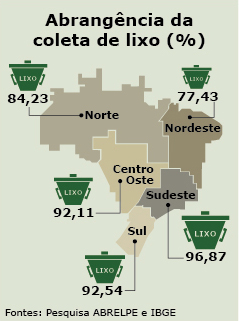Both mitigation and adaptation are needed to address climate change risks, says MIT professor John Sterman. We have the ingenuity to successfully tackle this complex issue, and lessons from the past to guide us.
Prof. John Sterman
What’s the best way to address the risks of climate change? Mitigation or adaptation? Should the world cut greenhouse gas emissions to lower the risks of harm from climate change (mitigation), or should we just get used to it (adaptation), spending to build seawalls, move populations inland, and figure out how to grow food for more than 9 billion people in a world of higher temperatures, droughts, and extreme weather?
Many people, including some I greatly respect, have lately argued that advocacy for mitigation isn’t working, so we should shift to advocacy for adaptation. They say that’s where the interest is after Superstorm Sandy, that’s how to get people engaged, and that’s where the money is. The frustration of climate activists around mitigation is understandable. The failure of the 2009 Copenhagen climate conference was deeply discouraging, and since then the international negotiations have stalled. Total pledges for emissions reductions under the UNFCCC’s (United Nations Framework Convention on Climate Change) voluntary system, even if fully implemented, are nowhere near enough. With gridlock in the U.S. Congress and the erosion of climate commitments in other nations, more and more people are giving up on mitigation.
Of course, adaptation is necessary. We’ve already warmed the climate about 1.4 °F (0.8 °C) over preindustrial levels. Global CO₂ emissions have reached new records every year since 2009. In May, atmospheric CO₂ hit 400 ppm for the first time in human history. We are dumping CO₂ into the atmosphere about twice as fast as nature can remove it. Even with the best imaginable policies, the climate will keep changing for decades, and sea level will keep rising for centuries. Adaptation is necessary.
However, adaptation without mitigation is futile. Since Sandy, the focus has been on updating flood maps and building sea walls. But sea walls are the Maginot line of climate change. Sea walls won’t help with ocean acidification, water shortage, drought, more frequent and more dangerous wildfires, declines in agricultural output, and the many other impacts of climate change, not to mention the climate refugees and risks of war those impacts create. However, when we point out that there’s no adapting to the changes in the climate we are facing if we don’t cut emissions dramatically, some adaptation advocates say, “yes, but if we can convene people around adaptation, they’ll soon see its limitations and will end up strongly advocating mitigation as part of their local adaptation plan.”
I’m deeply skeptical. It is more likely that the current push for adaptation will consume all the resources, energy and attention around climate change, so mitigation won’t be considered, or will become an afterthought. New York City just released its $20 billion climate resilience plan. The plan focuses on adaptation, and pays no attention to reducing the greenhouse gas emissions that create the need for adaptation in the first place.
Nearly 50 mayors and other local leaders just signed on to the new
Resilient Communities for America Agreement (RC4A), pledging to invest in adaptation and urging “state and federal leaders to support our local resilience initiatives and to take meaningful steps to build resilience and security throughout the nation.” There are potential synergies between adaptation and mitigation, and these should be exploited. For example, the RC4A recognizes that investments in emissions reductions can “avoid the costs of adapting to more severe climate impacts.” But the focus is on hardening local infrastructure and preparing for more extreme events, not mitigation, especially not at the level of national policy or international agreements.
Unfortunately, spending on sea walls, beach nourishment, hardening infrastructure, and other adaptation measures consumes resources that could be spent on mitigation. And adaptation doesn’t do anything to capture the harmful externalities of greenhouse gas emissions by, for example, pricing carbon at its true cost. Without mitigation, incentives to invest in efficiency and renewable, low-carbon energy are weak. Worse, adaptation measures are likely to ease the pressure people feel to price greenhouse gas emissions or cut emissions through moral hazard and moral licensing effects. When people have subsidized flood insurance or believe the government will bail them out after a disaster, they are more likely to build in the danger zone and less willing to reduce their risk. Similarly, if people believe adaptation protects them from the risks of rising seas or more severe storms, they may be less willing to cut their personal carbon footprint or work for policies that would reduce emissions.
But can we do it? Can we cut emissions? Can we create an energy system and economy that works, sustainably, for everyone? Technologically, the answer is yes. Those who say we don’t have the technology, that clean, renewable energy is too expensive, that building a sustainable economy isn’t possible. Efficiency, wind, solar and other renewable, low-carbon technologies are getting cheaper every day. Many actions to reduce emissions are profitable today, with ready-to-go, off-the-shelf technologies. If fossil fuel prices reflected the true costs of the emissions they create, then even more technologies for mitigation would be cost effective today.
But can we build the public support for policies, from individual communities to the nation to the world as a whole, that will create incentives for innovation, speed the scale up of new technologies, and realize the potential for emissions reductions? I’m constantly told it’s naïve to keep working for mitigation, that there’s no chance for national or international policy to cut emissions, that we will never get anything through the Congress — and forget about agreements with China, India, and other developing nations.
I say stranger and more amazing things have happened, and in my lifetime. During the Cold War, few people on either side believed they would live to see the Berlin Wall come down. And yet it fell. Few believed they would live to see the end of apartheid in South Africa. And yet it ended, peacefully. Few believed they would live to see an end to the violence in Northern Ireland. And yet there is calm in that troubled land today. I am sure you can think of other transformations that have made the world a better place, changes that were once considered impossible.
We should take heart from those who worked to end slavery and the slave trade. Some scholars estimate that as recently as the late 18th century, three-quarters of all the people in the world were held in some form of bondage, from those taken as outright slaves to indentured servants, debt slaves, serfs, or women sold into prostitution or arranged marriages against their will.
Slavery was normal. Slavery was routine. There was slavery in Europe. There was slavery in Asia. Native Americans had slaves. Africans had slaves. The Bible, both Old and New Testaments, condones slavery. The Greeks had slaves even as they created democracy. Slavery had always existed, and few doubted that it always would.
In Great Britain, the slave trade thrived. Millions of Africans were taken as slaves to the New World; many toiled and died in the cane fields of the West Indies producing sugar, molasses and rum. The profits from slave labor were used to pay for the goods shipped to West Africa, which were exchanged for still more slaves in Africa via the infamous triangle trade.
Just as with our dependence on fossil fuels, an odious and noxious industry was a linchpin of the economy. Many believed prosperity depended on it, a sentiment captured by slave merchant, James Houston, who wrote “What a glorious and advantageous trade this is…. It is the hinge on which all the trade of this globe moves.”
At the beginning, only a few seriously worked to end slavery and the slave trade. The Quakers had long opposed it. Other joined the movement, including Thomas Clarkson, who abandoned a promising career to devote his life to abolition, John Newton, the slaver-turned-minister who wrote “Amazing Grace,” the ex-slave Olaudah Equiano, the politician William Wilberforce, and many others.
They faced years of indifference, yet worked tirelessly to raise public awareness and build support for their cause. It took years to gather enough support to bring a bill banning the slave trade before Parliament. Slavers and planters greenwashed, lobbied and bribed. The abolitionists lost. A year later they lost a second vote. Did they say, “Slavery has always existed and it always will. Parliament will never pass this law”? Did they say, “We must turn to adaptation. Let us work to improve the conditions on slave ships. Let us work to keep slave owners from beating and raping their slaves.”?
They did not. They did not erode their goals. They kept their eyes on the prize. They redoubled their efforts. And they prevailed. An institution that had always existed, that people believed would always exist, that was believed to be essential to prosperity, ceased to exist. The British economy did not collapse. Abolition spread to other nations.
Of course the struggle for human rights continues. We have much yet to do. But the lesson for climate activists is clear. We can do it.
We can do it. But will we?
Change is not inevitable. The policies needed to stimulate innovation, cut emissions, and build a sustainable, prosperous economy will not just happen.
The Obama administration just announced its new climate policy plan. With gridlock in the Congress, the program centers on administrative actions such as rules governing greenhouse emissions from new power plants. But just because the administration has the authority, affirmed by the Supreme Court in 2007, to regulate CO₂ as a pollutant, don’t imagine that this announcement of new policies constitutes victory. Those with vested interests in fossil fuels will oppose these policies with every tactic at their disposal. The policies could be tied up in litigation, overridden by Congress, or weakened by the administration itself, delaying or preventing implementation.
The road to victory will be long. It requires that we work to overcome the counter-reaction so that the administration’s forthcoming proposals are implemented. It requires that we work for adaptation
and mitigation, without falling for the lie that adaptation is enough. It requires that we build on these initial steps to implement even stronger policies, in the United States and around the world. Victory will come only if we get involved. Join any of the hundreds of groups, left, right, and center, working for rational policy to cut emissions, create jobs, and build a sustainable economy, from 350.org to the Citizens Climate Lobby, to ConservAmerica (formerly Republicans for Environmental Protection), to Environmental Entrepreneurs, to Mothers Out Front, among many others.
We must create the change we need by cutting our personal carbon footprints. We must create the change we need by demanding that our elected representatives put a price on carbon, so that we pay the true costs of the fossil fuels we use. If our leaders don’t act, we must create the change we need by electing new leaders who will. We can do it. We’ve done harder things before. But we have to act, now.




